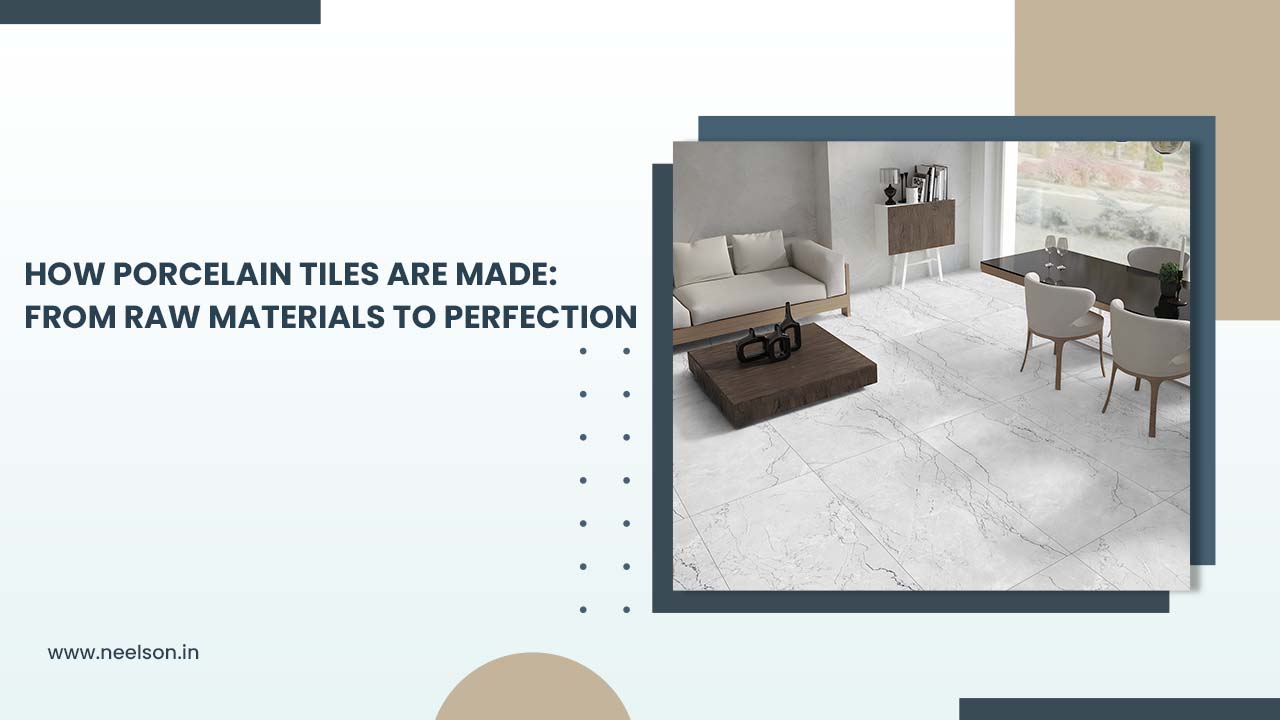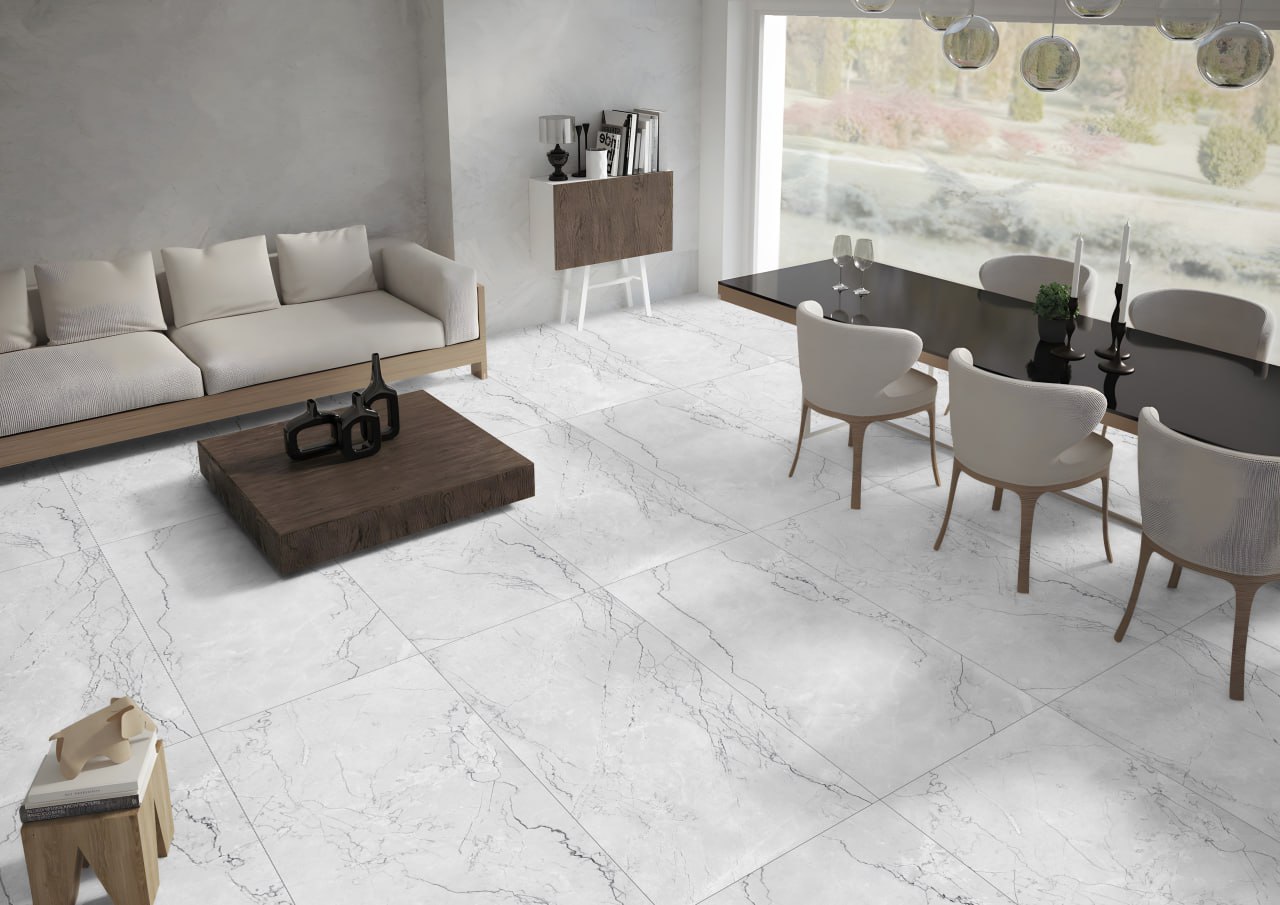
Porcelain tiles have always been admired for the way they illuminate beauty, grace, durability, and dynamic features. They are always chosen for various purposes like modern living rooms, commercial spaces, bathrooms, and much more. However, you should also take a look at how these wonderful tiles are produced in the backend system. What is it that makes them so flawless and perfect? They are made from simple raw materials and transform into well-finished porcelain tiles that look both fascinating and elegant. So let us take a closer look at how these porcelain tiles are made behind the scenes. We will also add up our own experiences at Neelson Ceramics and how we make porcelain tiles, forming every single tile a remarkable piece of art.
Choosing the Right Kind of Raw Materials
All types of porcelain tiles come with a careful selection of raw materials. They have the below elements that will play a crucial role in making a final product:
- Kaolin will make the tile look smooth and give it plasticity
- Feldspar will reduce the melting point when firing and help in vitrification.
- Quartz will add hardness and strength
- Silica will add to the overall strength and structure of the tile
Neelson Ceramic is a trustworthy porcelain tile manufacturer in India. We source the high-grade raw materials to maintain consistency in our products. Our tiles have a finished appearance and meet the top standards of quality, strength, and beauty.
Creating Perfect Blend: Grinding and Mixing
After the raw materials are chosen, they are grinded into fine powder. It is mixed with water to get that slurry. This process happens in ball mills, and they have large rotating cylinders that are filled with ceramic balls. They crush and blend the ingredients in a uniform manner. This turns out to be a smooth and homogeneous mixture. This is the key factor to determine the tile surface finish and density.
Later, when the grinding is over, the slurry undergoes screening and is filtered to remove impurities. The mix becomes much better, which will be seen during the final tile outcome. Here, it is crucial to balance the art of mixing and screening and make sure the mixture is not too coarse and not too fine.
Spray Drying to Turn Slip into Granules
The third step is spray drying, and the liquid slurry is transformed into small granules of powder. Slurry is sprayed into a hot-air chamber, and water rapidly evaporates. The rest of the material becomes tiny spherical granules and is moist enough to shape while pressing easily. Granules will become the body of your porcelain tile. At this point, there is a right consistency as the moisture content and particles become uniform and synergized. If this process is done well, you will get the perfect density and smooth finish.
Shaping the Tile with Pressing
At this forming stage, the powdered granules will shape up into tiles. With the hydraulic presses, the granules get compacted under immense pressure. This will turn the mixture into a solid tile body. Pressure will remove trapped air, and the tile will become denser and stronger. To get the desired size, there are various press molds used, such as 600x600 mm or a grand 1200mmx2400mm slab. At this stage, the surface textures and patterns can also be imprinted to get the tile body.

At Neelson Ceramics, the best Italian and Spanish presses are used to get that accurate and consistent look.
Removing Moisture With Drying
Once pressing is done, the green tiles that are unfired will contain a small amount of moisture. This moisture should be completely removed to prevent cracking before the firing process begins. With industrial dryers, all tiles are perfectly pressed and all moisture is removed. This step will take 30 to 45 minutes based on the size and thickness of tiles.
Glazing to Add Beauty
Glazing is a coating process that makes a thin-layer coating on tiles. Porcelain tiles give a signature shine and color and have protective properties. Glazing can be of many types, such as glossy, matte, textured, or even digitally printed patterns. At Neelson Ceramics, we use digital inkjet printing technology. With this, we make incredible and realistic designs. The glaze also makes tiles resistant to stains, and they become easy to clean. Also, this step will transform all tiles from a plain surface into a remarkable piece of design art.
The Main Process: Firing
The entire tile manufacturing process is defined correctly here in the firing process. Roller kins fire the tiles at 1200 °C temperatures. With this heat, the raw materials fuse to become a vitrified structure. The vitrification process gives porcelain tiles strength, water resistance, and density. In the firing process, several chemical and physical transformation occurs to form the following things:
- The tile body becomes rigid and compact.
- Glaze will melt and bond with the surface.
- Colors and patterns will become perfect.
Here in this process, you need a great amount of precision, and even the slightest variation in temperature will affect the final finish.
Sorting and Quality Inspection
After the tiles, they will undergo strict quality checks. We inspect each tile for consistency, flatness, surface finish, and size accuracy. We also use modern sorting lines with the help of laser scanners and cameras. We then detect the minor defects that may be invisible to the human eye. We then use graded tiles that are either premium, commercial, or based on checks. At Neelson Ceramics, we ensure a hundred percent quality check. We test every tile batch to ensure they have superior performance.
Packaging and Dispatch
The tiles are then sorted by size, finish, and series. Then they are carefully packaged in protective boxes and wooden pallets. We do proper packaging to make sure they are safe from breakage and scratches. After packaging, we ship them to the distributors, retailers, and customers worldwide.
Why Porcelain Tiles Are the Best
For making porcelain tiles, the entire process is meticulous. We use the most premium and durable surface materials. Here is why they are loved worldwide.
- Very low absorption rate. That is why they are suitable for wet areas like bathrooms and kitchens.
- Very strong and scratch-resistant. They are perfect for high-traffic spaces.
- Many designs and finishes. They can give marble look, wood look, and metallic look as well.
- It is resistant to fading and easy to maintain.
At Neelson Ceramics, we use the most advanced technology and precision to make porcelain tiles. We don't just build material, but we ensure it becomes the reflection of art and passion.
Final Thoughts
The transition from basic raw materials like quartz and clay to the sophisticated, exquisite porcelain tiles that adorn contemporary homes is quite astounding. From mixing and pressing to glazing and firing, each step of the process calls for skill, accuracy, and creativity.
This method is refined at Neelson Ceramics through years of experience, state-of-the-art equipment, and a strong dedication to quality. Because each tile is expertly created, its beauty and functionality will last.
The next time you're admiring a gorgeously tiled wall or floor, keep in mind that there's a tale of creativity, skill, and beauty behind that flawless finish.
